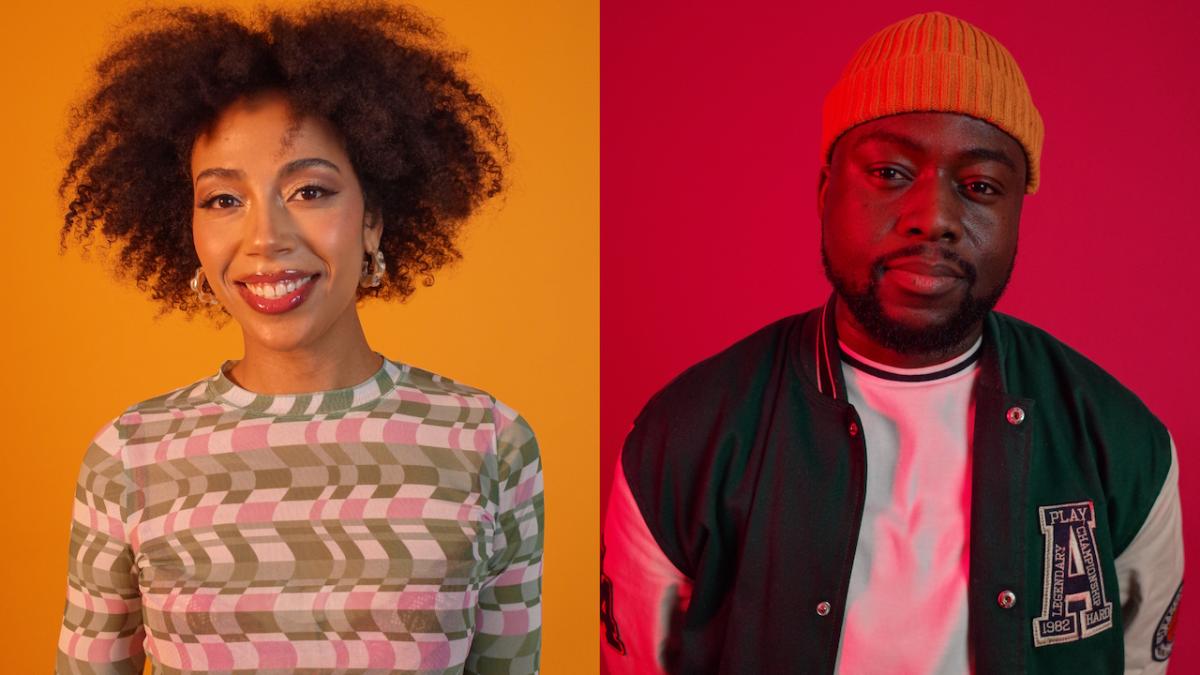
What happens when you put a photographer and a poet in the same room, give them some of the best tech on the market, and tell ‘em to let loose their innermost creative spark? That’s exactly what we wanted to find out.
Enter Richmond Kobla Dido and Ayesha Ash. The former is an animator and photographer whose work focuses on the exploration of identity and freedom of expression — and the latter is an artist, writer, and performer, as well as co-founder of Black Birds, a company that creates work for, by, and about women of colour in the Australian arts industries.
The challenge? Start with the written word, and turn that original poetry into a visual piece of art through the lens of a camera. Ayesha worked with the Samsung Galaxy Z Flip4, and Richmond utilised the power of the Samsung Galaxy Z Fold4.
Oh, and they only had four hours to get it all done. Piece of cake, right? Check out how it all went down below:
After the shoot, we caught up with the two of them for a little debrief.
PTV: What would you say is the purpose of your art?
Richmond: My work is an act of self-exploration. My aim through my work is to be able to inspire my community and open some very important conversations, be it in stills or moving images.
My practice as a photographer is all about creating safe spaces for people to tell their stories and to have a visual document that would be a reference for those who are to come, especially as an African in the diaspora. I aspire for my photography to positively encourage a connection and understanding between the viewer and the subject.
Ayesha: I make art that puts Black and Brown women and their experiences at the forefront. My work is a celebration of who we are and a recognition of our intersectionalities. I’m a Grenadian and Māori (Tūhoe) woman and the very few times that I saw someone who looked like me on television they were American or, through no fault of their own, their presence was tokenistic.
As a kid, this had a terrible impact on my sense of self and made me feel unworthy and unwanted. It wasn’t until early adulthood and the creation of Black Birds that I started deeply questioning these feelings and their catalysts. Collaborating with Black and Brown artists and exploring our shared lived experiences through art gave me clarity and community.
Even through the complexities of culture, displacement, joy, and identity, I felt seen and heard. I want that for all Black and Brown women. Art is such a powerful tool for connection and education and there’s a seat for everyone at this table.
Ayesha, how do you usually go about writing poetry? Do you have any rituals you follow? Or is it just whenever inspiration strikes?
Ayesha: I feel pulled to write something based on experiences, memories, conversations, and environment. Writing helps me to process and understand when something big happens in my life. Good or bad — I’ll write.
And Richmond, how did you go about creating your vision for this collaboration? Can you tell us the process behind it?
Richmond: From my perspective, for this collaboration, I felt it was important for me to listen to words Ayesha had prepared and to find a shared experience within that perhaps bonded us together. It is important in a collaboration of this sort that we both feel like our thoughts and ideas came across in a cohesive manner.
As Ayesha shared her words, I began to visualise how those words could be projected and photographed in a way almost as if they were coming out of her if that makes any sense. Photography in essence is the recording and play of light in a still form, only this time we incorporated words. The choice of what lights we used was also important, as I wanted to create a cinematic feel to the images to be created given Ayesha’s experience as a performer as well.
How did you both find working together?
Ayesha: Working alongside Richmond was wonderful. I’ve followed Richmond’s work for a few years now and have always loved the creativity and strength of his images; watching Richmond work first-hand, collaborating and being able to see the thought behind the photograph cemented that.
Richmond: This was my first time working alongside Ayesha, though I have been a huge fan of her work online for quite some time now. I was thoroughly impressed with how quickly she was able to write her moving poetic piece.
What did you enjoy most about the process?
Richmond: In a weird way, our use of time. It may sound crazy how it was the most challenging aspect of this collaboration but also a part of it that I enjoyed the most. I felt my mind challenged in a way I hadn’t pushed myself yet. Also creating everything entirely with the Samsung Galaxy Z Fold4 was such a fun challenge.
Ayesha: Definitely collaborating with Richmond to create physical representations of the words and ideas. Also, even though time was pressing I did really enjoy working to a tight deadline. I didn’t have time to second guess myself or overthink — I had to trust my instincts.
Unfold your world and check out the new Galaxy Z Flip4 and Galaxy Z Fold4. The Fold in particular is a perfect tool for artists, with its huge display and S Pen capabilities.



